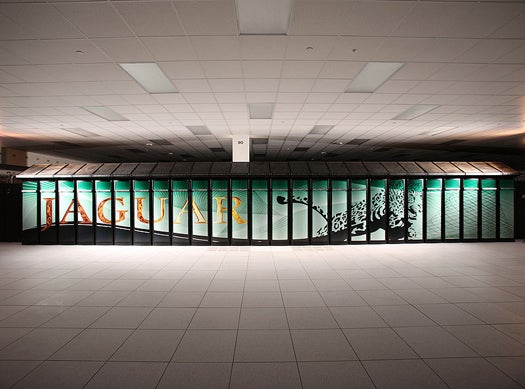Jaguar is Getting a GPU Upgrade, to Make it the World’s Fastest Supercomputer Again
The new souped-up supercomputer will be renamed Titan

Back in June when the latest edition of TOP500 dropped (TOP500 lists the world’s top supercomputers), Japan’s K Computer leapt ahead of China’s Tianhe-1A supercomputer to become the biggest, baddest computing platform on the planet. But after more than a year of slipping down the ranks as its competitors across the Pacific surged ahead, Oak Ridge National Labs Jaguar supercomputer is poised to become the fastest computer in the world once more.
Cray Inc., maker of the XT5-HE supercomputer at the heart of Jaguar, says it has inked a deal with ORNL to overhaul the Department of Energy computer with thousand of graphics processors from NVIDIA as well as chips from Advanced Micro Devices. The tune-up will push the peak performance beyond K Computer’s current capacity, putting ORNL’s computer at the top of the TOP500 for the first time since last year. After the overhaul, Jaguar will be renamed Titan.
Graphics processing units, or GPUs, are chips that specialize in screen graphics (they’re what manage all the individual screen pixels when you play your Xbox, for instance). As such, they are also quite good at processing a range of different tasks simultaneously, a process known as parallel computing. Parallel computing speeds up complex computing processes, and the NVIDIA Tesla GPUs are critical to enabling the 20-petaflop peak performance envisioned for Titan. The powerful AMD chips will process data in sequence, more like the average PC.
Even as recently as last June when Jaguar topped the TOP500, it had already technically been dethroned, as its peak performance had already been theoretically surpassed by a Chinese system called Nebulae. Titan should in short order re-establish ORNL’s supercomputing lab as the world’s elite–for the time being, at least.